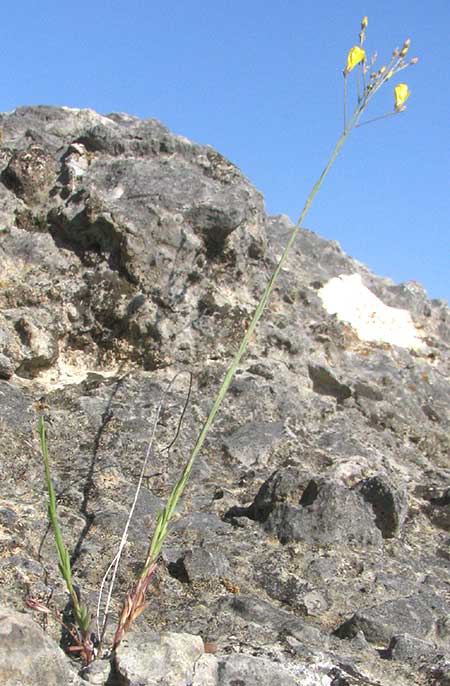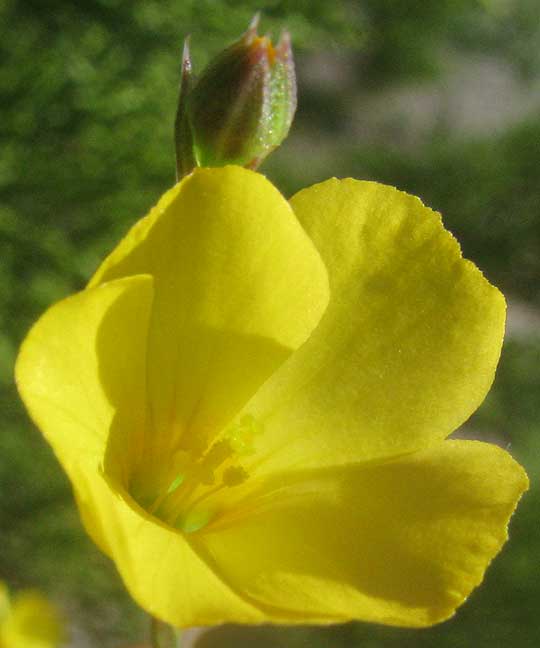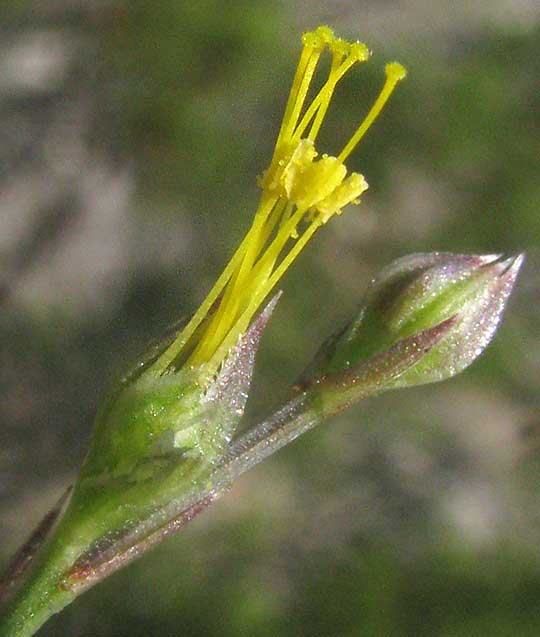Excerpts from Jim Conrad's
Naturalist Newsletter
from the May 5, 2013 Newsletter issued from the Frio Canyon Nature Education Center in northern Uvalde County, southwestern Texas, on the southern border of the Edwards Plateau; elevation ~1750m (~5750 ft); N29.62°, W99.86°; USA
ROCK FLAX
In fissures of barren limestone rock and very thin soil atop limestone bedrock nowadays a slender, sparsely leafed, foot-tall wildflower with yellow blossoms is flowering in places it's hard to imagine provide enough water and nutrients for the little plant to survive, as seen below:

Below you can see a blossom's five yellow petals with their minutely jagged outer edges and, exserted from the corolla center, five yellow stamens with pollen encrusted anthers, and -- hard to see -- a close cluster of five yellow just stigmas above and stamens' anthers:

If you touch the flower too roughly the whole corolla falls off as if it were hardly attached. The technical term for such loosely connected corollas is "fugacious." When a corolla does fall off, you can better see the stamens and stigmas, as shown below:

There the topmost, spherical items bristling with short hairs are the stigmas. They reside atop long styles, which unite at their bases atop a single ovary. Styles are an ovary's neck. The five hotdog-bun-shaped items below the stigmas are anthers covered with pollen grains.
Not many plant families produce flowers with one ovary topped with five styles like this, in combination with only five stamens. When such a flower is produced on a slender plant with such modest leaves as are on our plant, you should think of the Flax Family, the Linaceae. The Flax Family isn't so well known, except for its single famous member, the Flax that as school children we hear was cultivated by our pioneer ancestors.
In fact, the rock-loving plant in our picture is a real flax -- a member of the genus Linum -- though it's not the Flax that's been cultivated since ancient times for the fiber in its stem and the linseed oil in its seeds. The historical flax is Linum usitatissimum. What's growing on our local limestone rocks is the Rock Flax, LINUM RUPESTRE. The name rupestre is derived from the Latin word rupes signifying cliff or rock. Rock Flax is mainly a Mexican plant, occurring on limestone throughout arid Mexico and Guatemala, but entering the US in arid parts of Texas and a bit of New Mexico.
So, here's another very pretty wildflower that needs to be grown in rock gardens where rainfall is scarce. My picture shows a plant just beginning to flower. Later the inflorescence will be larger with more blossoms.